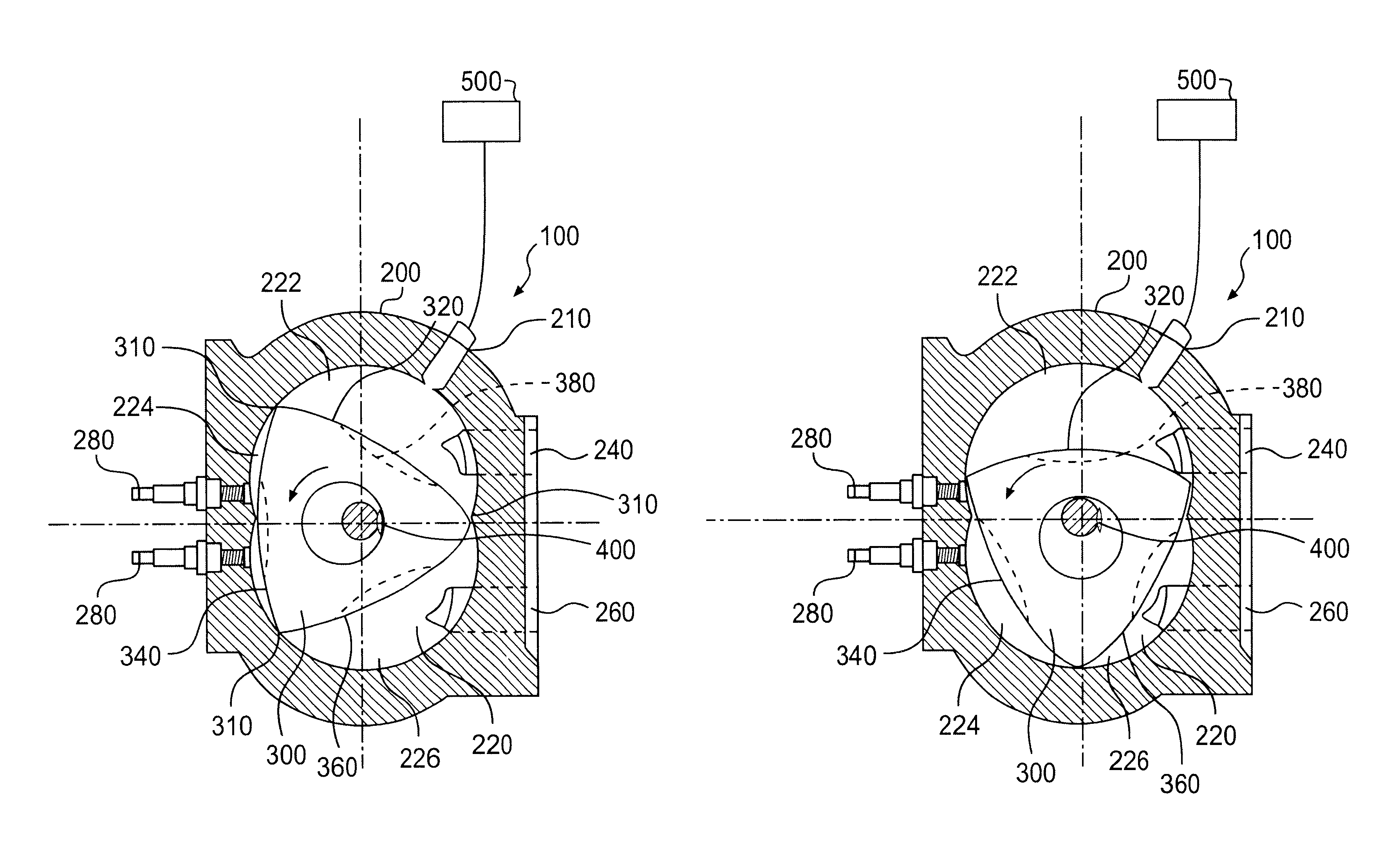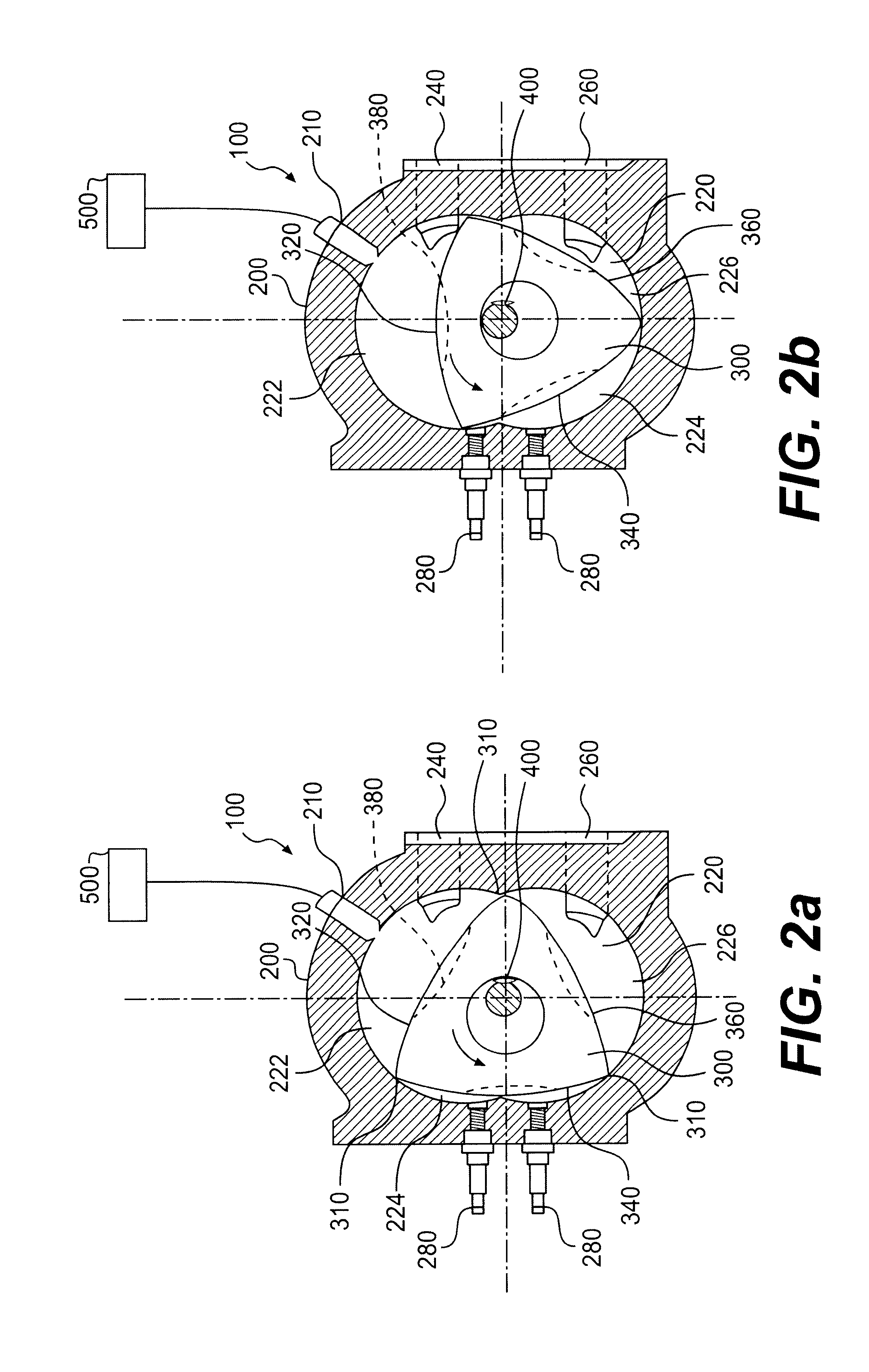Rotary piston engine and method of operation
a rotary piston engine and rotary piston technology, applied in the direction of rotary piston liquid engines, machines/engines, liquid fuel engines, etc., can solve the problems of not developing a commercially viable rotary engine design, heavy turbocharger, and failure to perform well at altitude, so as to achieve high torque, high horsepower, and high fuel efficiency
- Summary
- Abstract
- Description
- Claims
- Application Information
AI Technical Summary
Benefits of technology
Problems solved by technology
Method used
Image
Examples
example
[0085]A single rotor of the type known prior to the present invention is managed using the method of the present invention to obtain superior performance. At 5,000 rpm, the rotorwill subtend 30 degrees of crankshaft angle per millisecond, if the injector port remains open. (5,000 rpm×0.006=30° per ms.) The intake timing, as shown in FIG. 4a, is typically 270°. The injection cycle, therefore, cannot be longer than 9 milliseconds (270° divided by 30°=9 ms.) The present invention preferably keeps the injector event within that window and, further, preferably as short as possible (for example, 2-4 ms.) This is accomplished by either further advancing the injector timing to maintain it within the intake window and / or shortening the pulse width of the injector event in order to maintain the injector event at the proper point in the cycle. Prior known methods of managing direct injected rotary engines have not disclosed and appear not to have recognized these features of the present invent...
PUM
 Login to View More
Login to View More Abstract
Description
Claims
Application Information
 Login to View More
Login to View More - R&D
- Intellectual Property
- Life Sciences
- Materials
- Tech Scout
- Unparalleled Data Quality
- Higher Quality Content
- 60% Fewer Hallucinations
Browse by: Latest US Patents, China's latest patents, Technical Efficacy Thesaurus, Application Domain, Technology Topic, Popular Technical Reports.
© 2025 PatSnap. All rights reserved.Legal|Privacy policy|Modern Slavery Act Transparency Statement|Sitemap|About US| Contact US: help@patsnap.com



